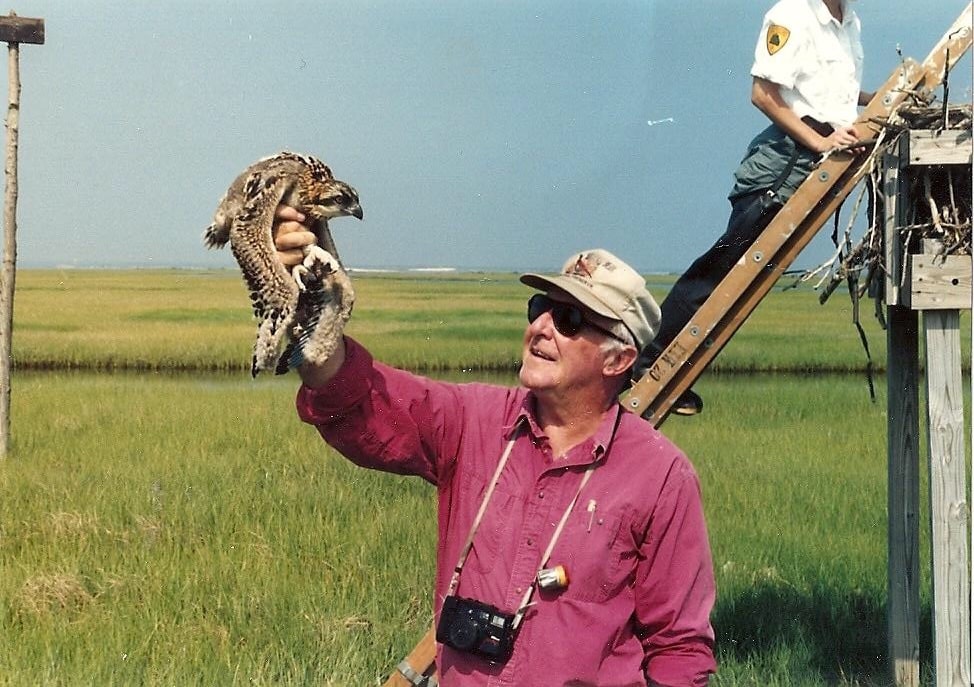New Jersey Osprey Project
Monitoring and managing New Jersey's ospreys using volunteers and citizen scientists to help ensure the state population remains stable.
Brian Kusher
Why Our Work Matters
New Jersey is home to over eight hundred nesting pairs of osprey. Over the past 50 years, they have made a remarkable recovery throughout the state, from the Meadowlands to Cape May and west along the Delaware Bayshore and up the Delaware River. Their nests line our waterways and dot coastal sedge islands, where their main prey of fish is found. Their abundance indicates that we are doing a good job of protecting sensitive aquatic habitats, especially along the Atlantic coast. Despite this, we must take caution as ospreys face a lot of threats throughout their lives.
At Conserve Wildlife Foundation of NJ, it is our goal to monitor and maintain a robust population of ospreys, that are a symbol of a healthy coast.
Grassroots Conservation Efforts
Our work with ospreys is grounded in our deep connection with them and their reliance on man-made nest platforms, which they call home. These nest platforms were an essential component in early recovery efforts for them after the effects of DDT and habitat loss caused their population to decline from an estimated 400-500 nesting pairs to only 50 statewide.
The nest platforms replaced natural nest sites (trees and snags), which were lost to development on coastal barrier islands in the 1950-60s. Nest platforms were installed in coastal wetlands that were protected from development and away from human disturbance. Today around 75% of New Jersey’s ospreys rely on these platforms to nest.
Our biologists have built and installed over 200 osprey nesting platforms along the state’s coast to help the species rebound to stable population status.
In recent years, CWF has played a leading role in the monitoring and management of nesting ospreys in New Jersey. Each year we coordinate surveys of colonies to determine outcomes at nests. During the peak of their nesting season, usually in late June and early July, a small group of specially trained volunteers conducts surveys of the most densely populated colonies by boat. Nests are accessed with a ladder and/or pole-mounted mirror or small camera. Young are banded for future tracking, and the data collected helps to determine the overall size and health of the population. Nests with plastic marine debris are cleaned of the dangerous material. Nest visits are minimized during their nesting season to limit disturbance to adults and young. It has been our mission to reduce any impacts on these majestic birds while still collecting data to keep our finger on the pulse of the population.
To help engage citizen scientists and for the first time in over 25 years, young ospreys have been marked with an auxiliary band in New Jersey. The new band, which is a red anodized aluminum rivet band bears an alpha-numeric code that allows birders, osprey watchers, and wildlife photographers the ability to identify these individual birds by their bands. The Project Redband initiative is focused on ospreys that nest in the Barnegat Bay watershed from Brick Township to Little Egg Harbor. The main goals of the project are to engage the public in osprey management and conservation along the Jersey Shore. At the same time, while collecting data from re-sightings, we will learn about their dispersal, foraging habits, site fidelity, migration routes, and their life span.
In addition to Project Redband, CWF also engages the public through our Barnegat Light Osprey Cam, which launched in 2019 at a nest in Long Beach Island. This cam, along with our osprey project as a whole, was made possible through the generous support of the Osprey Foundation, the Zoological Society of New Jersey, Atlantic City Electric, and generous individual donors.
Thank you to our project donors and sponsors


















